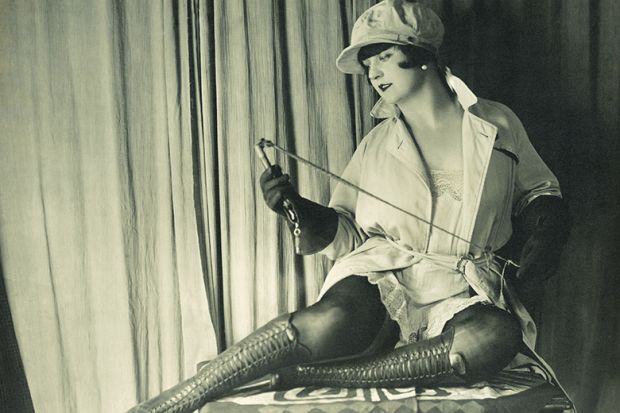It is rare for an academic book to feature information about the sex life of one’s grandmother. But that is the case with the forthcoming book by Barry Reay, Keith Sinclair chair in history at the University of Auckland, New Zealand: Sex in the Archives: Writing American Sexual Histories (Manchester University Press).
It opens with a description of the Grainger Museum at the University of Melbourne. This is devoted to the Australian composer and pianist Percy Grainger, most famous for his arrangement of the folk song Country Gardens, generally seen as a rather sentimental tribute to a kind of traditional Englishness. But he also had a far less respectable side. Alongside the things one would expect of a musicologist, therefore, the museum incorporates what Grainger called his “Lust Branch Collection”, featuring “whips, photographs, sexological works, explicit personal descriptions of the receiving and inflicting of sexual pain, and paeans to the advantages of ‘self-help’ (masturbation) and the joys of oral sex”.
Sex in the Archives goes on to explore gay and transgender diaries; the photographic record of “queer Baltimore”; the testimonies and artwork to be found in the Kinsey Institute; and even the 1990s phenomenon of Badboy Books (gay pornography written largely by straight women). He also explores sources for tracking the history of masturbation and casual sex, vast topics that are by their nature private and often unrecorded. Throughout, Reay is committed to an approach that “refuses the confines of identity sexuality studies, spanning the spectrum of queer, trans, and the allegedly ‘normal’”.
Although he sometimes turns to “counterarchives” devoted specifically to the history and experiences of subcultures, he makes at least as much use of “the most traditional and respectable repositories”. He has “long been amused by the fact that Bryant Park, a historical haunt of hustlers and their clients, is right next to the walls of the august New York Public Library”. It is in that very institution that he discovers some great material for revealing the realities of “casual sex” before the term was used, namely the investigators’ reports submitted to a group of moral reformers that “chart sex in dance halls, massage parlours, hotels, and restaurants in the early twentieth century”.
So where does my maternal grandmother fit into all this?
When I worked in publishing at the start of my career, I was involved in editing a book that Reay had co-authored about 16th-century radicals. I contacted him when I took over as books editor here at Times Higher Education last year. He informed me that he was now working on sexual history, so I told him about how I had once spent a strange morning in the British Library reading my grandmother’s very explicit correspondence with the sexologist Havelock Ellis. I am delighted to say that he decided to reference her in his new book.
